Publications Routes/Roads Road network operations
This page lists Routes/Roads articles of PIARC in the field of road network operations. These publications are classified chronologically.
-
Award-Winning National Reports - TS1 - Road Administration - Road and Road Transport in a Changed World
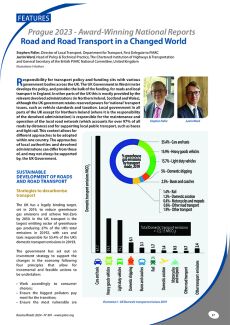
Responsibility for transport policy and funding sits with various government bodies across the UK. The UK Government in Westminster develops the policy, and provides the bulk of the funding, for roads and local transport in England. In other parts of the UK this is mostly provided by the relevant devolved administrations (in Northern Ireland, Scotland and Wales), although the UK government retains reserved powers for ‘national’ transport issues, such as vehicle standards and taxation. Local [...]
-
Innovation Management Approaches to Manage a Large Portfolio of Innovation Projects on German Motorways
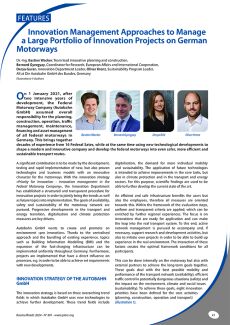
On 1 January 2021, after two intensive years of development, the Federal Motorway Company (Autobahn GmbH) assumed overall responsibility for the planning, construction, operation, traffic management, maintenance, financing and asset management of all federal motorways in Germany. This brings together decades of experience from 16 Federal Sates, while at the same time using new technological developments to shape a modern and innovative company and develop the federal motorways into even safer, more [...]
-
Study of the Impact on Surface Water of Lime Slurry Used to Treat Bleeding
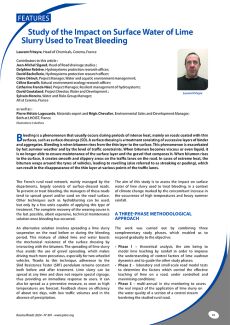
Bleeding is a phenomenon that usually occurs during periods of intense heat, mainly on roads coated with thin surfaces, such as surface dressings (SD). A surface dressing is a treatment consisting of successive layers of binder and aggregates. Bleeding is when bitumen rises from the thin layer to the surface. This phenomenon is exacerbated by hot summer weather and by the level of traffic constraints. When bitumen becomes viscous or even liquid, it is no longer able to ensure maintenance of the [...]
-
Development of Action Plans as Part of the Implementation of a Sustainable Winter Service Programme
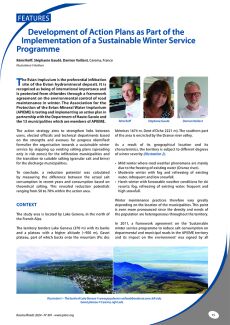
The Evian Impluvium is the preferential infiltration site of the Evian hydromineral deposit. It is recognised as being of international importance and is protected from chlorides through a framework agreement on the environmental control of road maintenance in winter. The Association for the Protection of the Evian Mineral Water Impluvium (APIEME) is testing and implementing an action plan in partnership with the Department of Haute-Savoie and the 13 municipalities which are members of APIEME. [...]
-
PIARC Prize - Organization and Administration - Identifying and Resolving the Problems of Accessibility to Basic Services Experienced by Rural Communities through the Integrated Rural Accessibility Planning (IRAP) System
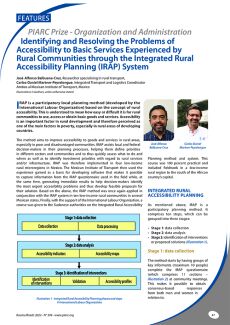
IRAP is a participatory local planning method (developed by the International Labour Organization) based on the concept of rural accessibility. This is understood to mean how easy or difficult it is for rural communities to use, access or obtain basic goods and services. Accessibility is an important factor in rural development and therefore perceived as one of the main factors in poverty, especially in rural areas of developing countries.
1 / 68
- Previous
- Next